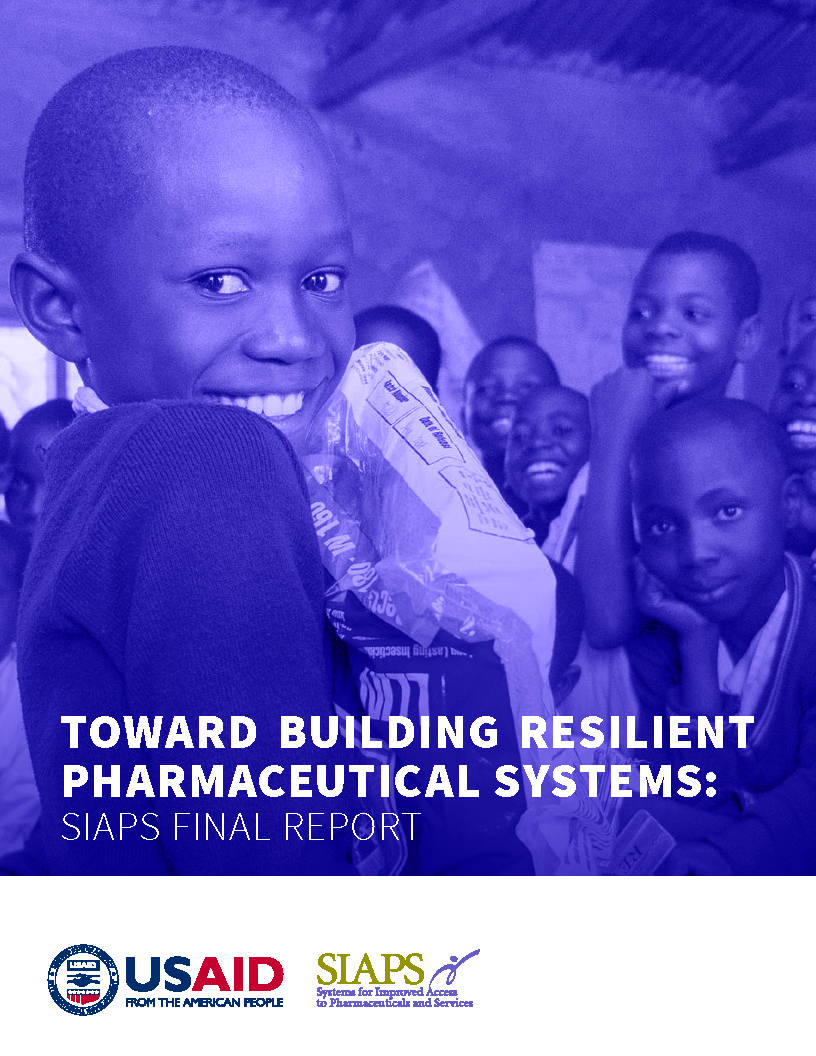The Ministry of Public Health (Ministerio de Salud Pública, or MSP) of the Dominican Republic organized the High-Cost Medicines Program (Programa de Medicamentos de Alto Costo, or PMAC) in 2008[i] to facilitate clinical care for patients with very rare diseases and high-cost treatment, such as cancers unresponsive to conventional treatments, rheumatoid arthritis, hepatitis C, and … Read more
Archive Featured
From policies to patients: Handling antibiotics with care across the pharmaceutical system
This week, the global health and development community is commemorating the first World Antibiotic Awareness Week. Spearheaded by the World Health Organization (WHO) to raise global awareness on the magnitude, reach, and severity of antibiotic resistance; the event comes at a time when resistance to many antimicrobials, not just antibiotics, has now escalated to pandemic … Read more
Defeating pneumonia: Considering both providers and caregivers in achieving medication adherence
More than 900,000 children die of pneumonia each year. Many of these cases go undiagnosed and untreated. The countdown to 2015 report notes that only 54% of children with pneumonia symptoms are taken to a health care provider, while the Global Action Plan for Pneumonia and Diarrhea reports that only 31% of children with suspected … Read more
Every breath counts: Improve health outcomes for pneumonia through better access to pharmaceuticals and services
Pneumonia is the leading infectious disease killer of children under five, killing more than 900,000 children— the vast majority in South Asia and sub-Saharan Africa— every year. Reductions in childhood pneumonia deaths lag behind reductions in deaths due to malaria, diarrhea, measles and AIDS, and many of these children die because of delays in care … Read more
Institutionalizing e-TB Manager as a national TB registry in Ukraine
Ukraine has the second-highest burden of TB in the European region. According to the Ukraine’s Ministry of Health, TB is the leading cause of death from infectious diseases in the country. Ukraine’s efforts at TB control use a mix of standardized approaches, including Stop TB strategies, as well as directly observed therapy short-course (DOTS) guidelines … Read more
Investigating the potential of drones to improve health outcomes
Since 2014, SIAPS, in collaboration with the Ministry of Health (MOH) in the Dominican Republic (DR), has been developing the design of a supply chain for HIV and tuberculosis (TB) laboratory samples that offers national coverage, including rural areas. Recently, the MOH approached SIAPS seeking technical advice on the feasibility of implementing and using unmanned aerial … Read more
Financing of ARVs in the Dominican Republic
During the period between 2004 and 2014, funding for the purchase of antiretrovirals (ARVs) in the Dominican Republic was falling in Global Fund to Fight AIDS, Tuberculosis and Malaria (Global Fund) projects. The US President’s Emergency Plan for AIDS Relief (PEPFAR), through the local mission of the US Agency for International Development (USAID), allocated small … Read more
Revision of the Essential Medicines List in the Dominican Republic
The National Essential Medicines List (NEML) of the Dominican Republic had not been updated since 2005. Over the course of 2012 and 2013, some therapeutic groups and specific lists of disease control programs, such as HIV and tuberculosis, were revised, but they were not consolidated and validated as a national list. In May 2014 the … Read more
Piloting Framework Agreements for Procurements in Ukraine
The introduction of framework agreements for the 2015 public health care procurements in the Poltava and Dnipropetrovsk oblasts of Ukraine reduces the risk of stock-out and helps employees more efficiently use their time by creating more flexible, shorter procurement procedures, while decreasing the opportunity for corruption. These framework agreements, the first to be used for … Read more
Strengthening TB Data and Commodities Management in the ECSA Region
The burden of tuberculosis (TB) is particularly high in Africa, where many overstretched health systems struggle to treat the disease with limited resources. According to the 2013 WHO Global Tuberculosis Report, approximately one-quarter of the world’s 8.6 million new TB cases in 2012 came from the African region. Making the problem more difficult is the … Read more


